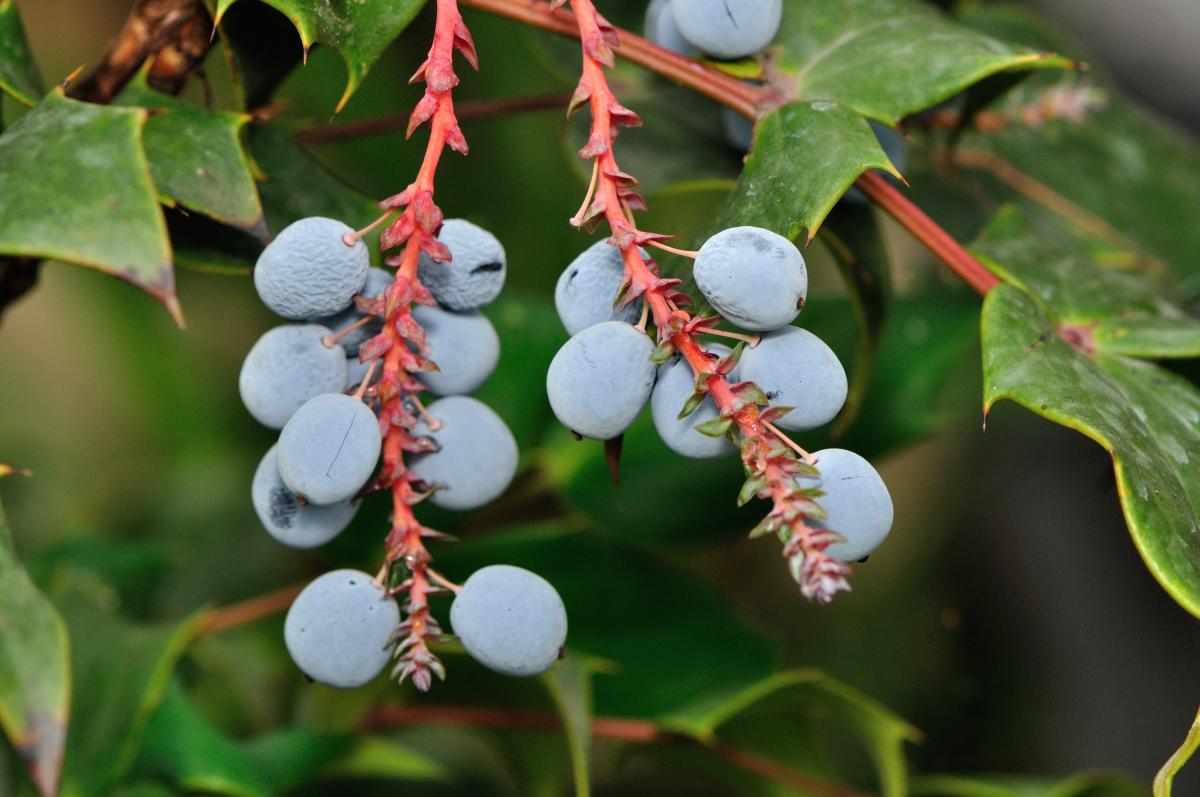小蘗科
學名:Mahonia japonica (Thunb.) DC.
英名:Japanese Mahonia
別名:十大功勞、功勞木、鐵八卦
十大功勞屬常綠灌木,原產臺灣中、高海拔山區。株高約1.5m,從基部萌生新枝。互生單數羽狀複葉,對生4~6對橢圓形小葉,葉緣有尖銳鋸齒。總狀花序腋生,花黃色,果實紫色有白粉。開花期冬至春季,結果期春至初夏。
An evergreen shrub in the genus Mahonia and native to the middle and high-altitude mountains of Taiwan. The plant reaches 1.5m tall with new shoots sprouting from the basal. Each odd-pinnate compound leaf usually grows four to six pairs of elliptic leaflets with sharp serrations on the edge. Yellow flowers are borne on axillary raceme and fruits turn purple with white powder. Flowering from winter to spring and fruiting from spring to early summer.
全日照或半日照溫暖至冷涼環境栽培,可以在樹蔭下種植。植株略具耐旱性,介質乾才澆水。每季施用一次長效性綜合肥料。枝老化必須將整支從基部剪除,因葉片有銳刺,修剪需小心防護。繁殖使用播種與分株法。
Grown in warm to cool environment with full-sun or partial shade as well as under shades of trees. The plant is slightly drought tolerant and requires watering only when medium soil dries. Apply long-active compound fertilizers once every season. Aging branches must be cut off from the basal. Be careful on sharp thorns when trimming leaves. Propagated by seeding and division.
花、果、葉都能觀賞,植株姿態優美,常用於日式風格的庭園。枝葉堅韌且葉緣具有銳刺,成排種植作為綠籬,有良好的阻隔效果。葉片是傳統藥材,習稱「功勞葉」。
The whole plant, including flowers, fruits and leaves, is ornamental; often planted in Japanese-style gardens. The hard and spiny foliage make it an excellent barrier hedgerow. The foliage could be processed into traditional medicinal herbs and so it’s also called "leaves of merit."




